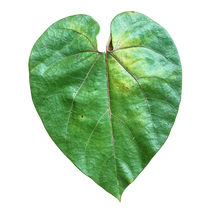Wankawi weaves together energetic & shamanic awareness, the plant medicine path, relationship with our Earth and spiritual awakening to support the personal and collective (r)evolution on this planet. Through healing, retreats, education, community and collaboration, Wankawi helps bridge and integrate the traditions and teachings of the ancient wisdom of the Earth to into our modern world. With an embodied awareness of spirit, humanity and the Earth, together, we create new solutions to transform our lives and life on this planet.
THE BIRTH OF WANKAWI
Wankawi was conceived just as 2020 came into being marking a deep transformation of Jaime's work in the world. It began with Jaime being called to work collaboratively with a visionary artist for the creation of the logo image you see representing Wankawi. Together they called on the Wisdom of the Earth, the ancient traditions of Mexico, Peru, India and the gifts cultivated through lifetimes to channel the image. The name Wankawi came 3 months later, during the onset of the coronavirus pandemic, while Jaime was in the Amazon jungle. She was working with a plant, called wankawi sacha and an urgent message came for the need for the voice of the plants and the Earth to be heard in a world in crisis.
Wankawi comes from name of both a plant, wankawi sacha (also huancahui sacha or yawar panga), and a falcon in the Amazon forest. Wankawi sacha (Aristolochia leuconeura) is a rare, tropical perennial, that produces purple flowers. The indigenous traditions use the extract of the leaves as a purgative and depurative to treat cough, bronchitis and tobacco and cocaine addictions (1).
Energetically, it can help remove subtle energies we humans collect which are no longer of use to us. Once connected to it's spirit, we can call on it’s wisdom, presence, protection and guidance to help us bridge into the material world.
Wankawi comes from name of both a plant, wankawi sacha (also huancahui sacha or yawar panga), and a falcon in the Amazon forest. Wankawi sacha (Aristolochia leuconeura) is a rare, tropical perennial, that produces purple flowers. The indigenous traditions use the extract of the leaves as a purgative and depurative to treat cough, bronchitis and tobacco and cocaine addictions (1).
Energetically, it can help remove subtle energies we humans collect which are no longer of use to us. Once connected to it's spirit, we can call on it’s wisdom, presence, protection and guidance to help us bridge into the material world.
|
The plant was named after resemblance of it's flowers to the feathers of the huancahui falcon (2). The bird Huancahui (Herpetotheres cachinnans), also called the laughing falcon, is named for it’s sounds of laughter echoing through the jungle. It is also referred to as the snake hawk, as it catches poisonous snakes and other reptiles.
"According to this Iquitos legend, if an Amazonian shaman is able to learn the song or icaro of the Huancahui, he can also dominate snakes just like the Huancahui does. However, if he fails to chant the song perfectly, he will be besieged by snakes and die. Properly sung by the shaman, his icaro will stunt a snake and defeat it, leaving it impotent and unable to bite.” (3) "At a symbolic level, Yawar Panga [Wankawi Sacha] would represent both the power of the air (bird) that dominates the venomous snake in its therapeutic aspect, and potentially also a poisonous earth power (snake), that can kill the body in toxic doses. If we say that the snake symbolizes knowledge, it is good knowledge when it is inspired and ritualized, in a spiritual use (air), and it is bad knowledge when appropriated as non-ritualized consumable (earth). The spiritual (aerial) dimension of the Yawar Panga then has the power to dominate and remove poisonous knowledge, false knowledge or beliefs, which agrees with the traditional use of purifying from "evil" or "demons.” (2) |
ABOUT JAIME
|
Wankawi represents a pivotal transformation in Jaime's own journey of consciousness, initiation and embodied awakening. Wankawi synthesizes her passion for honoring and stewarding the plants and the Wisdom of the Earth, her belief in the power of community and our ability to be in direct connection to higher purpose. |
References:
(1) Sanz-Biset J, Campos-de-la-Cruz J, Epiquién-Rivera MA, Cañigueral S. A first survey on the medicinal plants of the Chazuta valley (Peruvian Amazon). Journal of Ethnopharmacology. 2009 Mar;122(2):333-362. DOI: 10.1016/j.jep.2008.12.009.
(2) Mabit, J. Yawar Panga Ritual Ceremony. Conference. 1993, 2014. Article Link.
(3) Iquitos News.Huancahui.
(1) Sanz-Biset J, Campos-de-la-Cruz J, Epiquién-Rivera MA, Cañigueral S. A first survey on the medicinal plants of the Chazuta valley (Peruvian Amazon). Journal of Ethnopharmacology. 2009 Mar;122(2):333-362. DOI: 10.1016/j.jep.2008.12.009.
(2) Mabit, J. Yawar Panga Ritual Ceremony. Conference. 1993, 2014. Article Link.
(3) Iquitos News.



